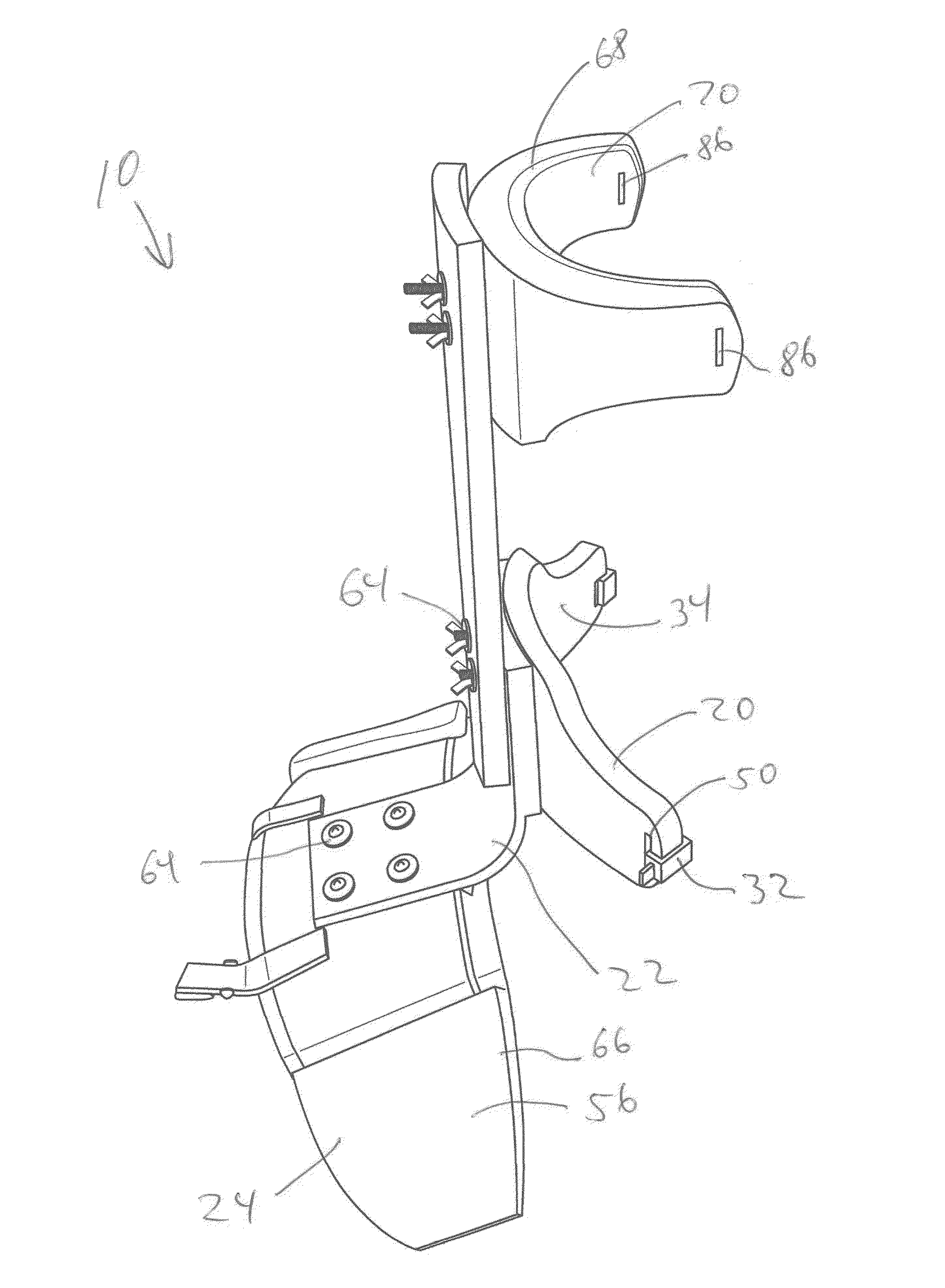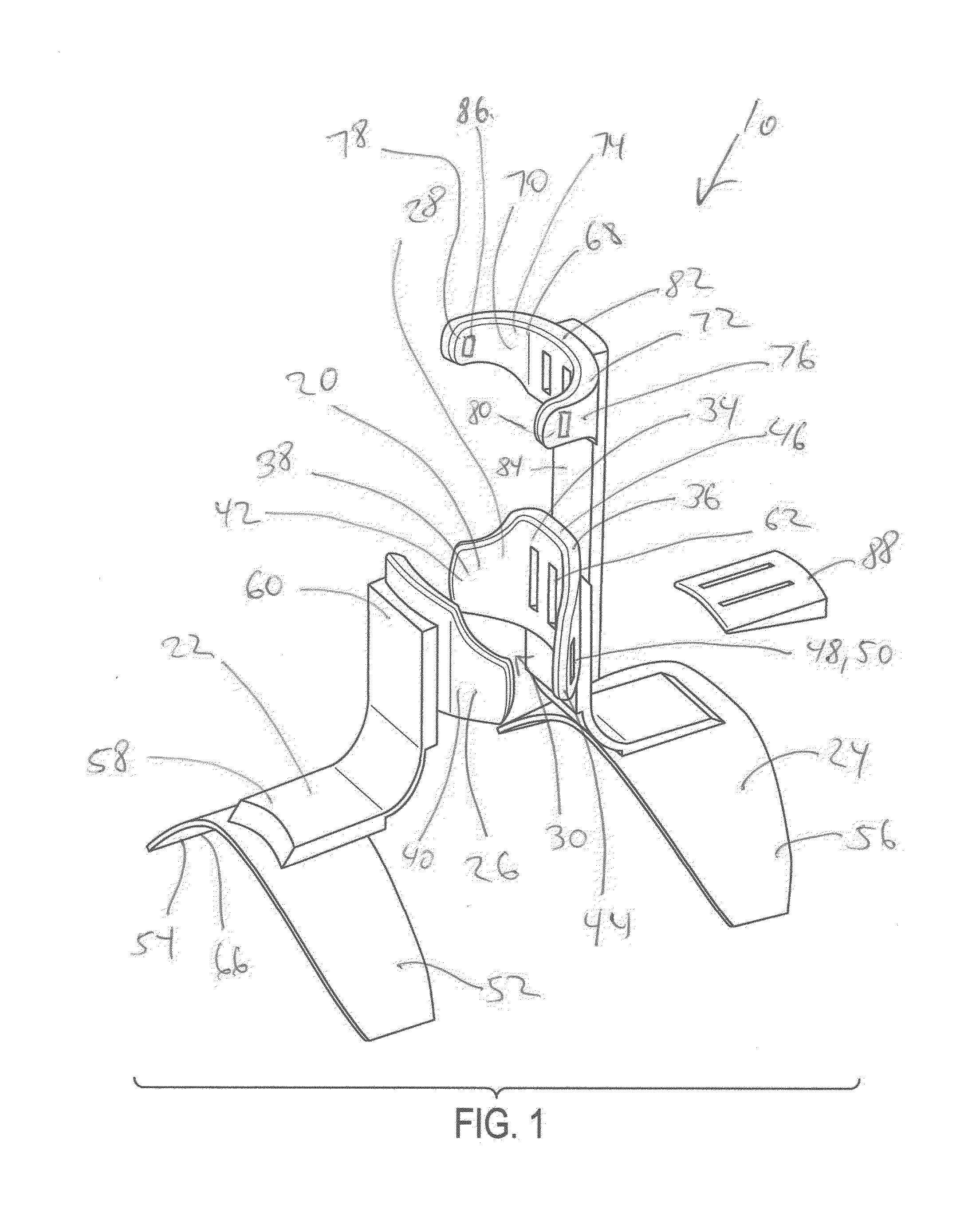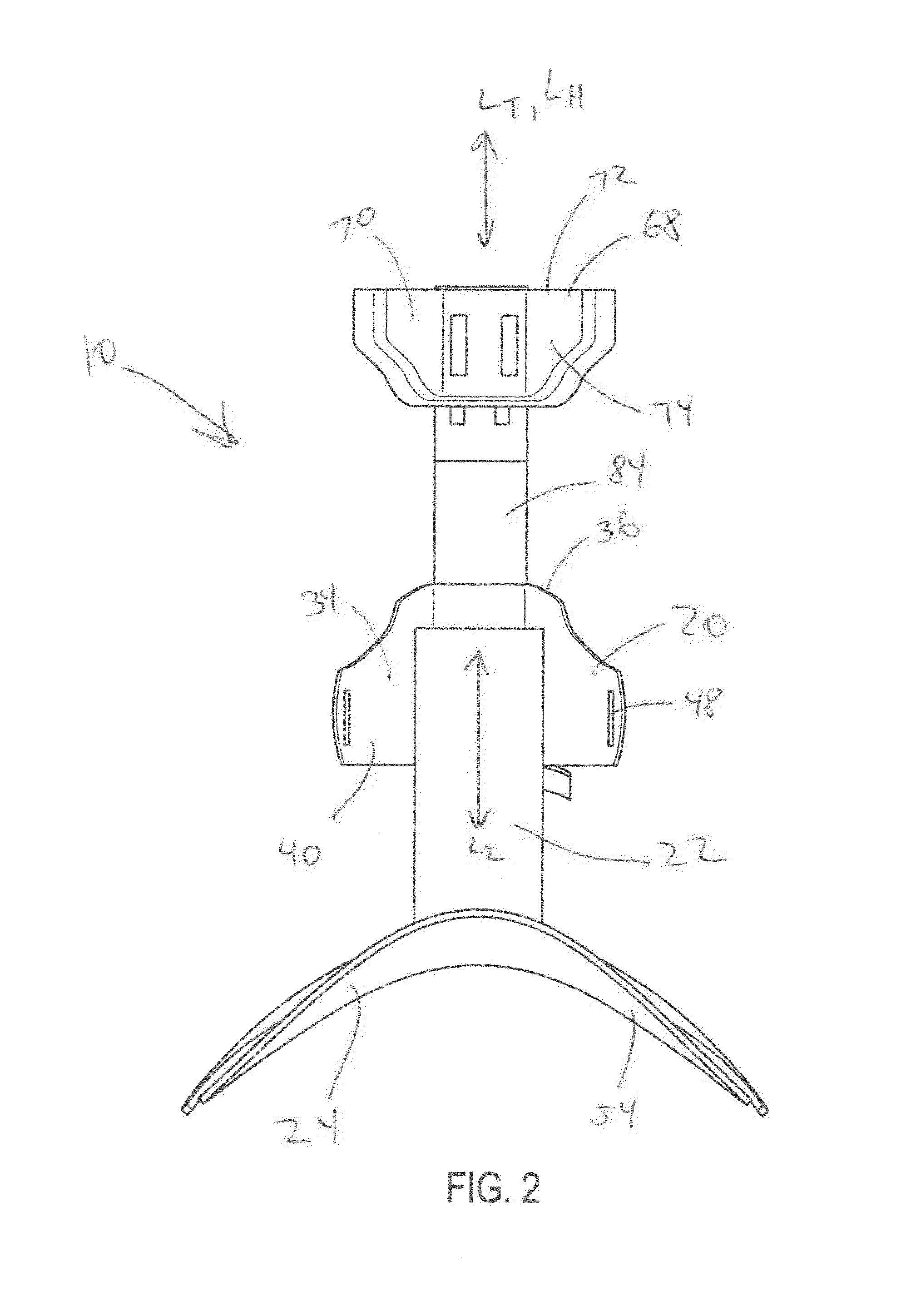Orthotic and assistive devices, systems and methods
a technology of assistive devices and orthotics, applied in the field of orthotics and assistive devices, can solve the problems of compromising the ability of people with special needs to safely and effectively engage, lack of appropriate adaptations and equipment, and lack of appropriate adaptations and equipment, and achieve the effect of safe participation
- Summary
- Abstract
- Description
- Claims
- Application Information
AI Technical Summary
Benefits of technology
Problems solved by technology
Method used
Image
Examples
second embodiment
[0052]In a second embodiment, as illustrated in FIG. 7, the orthotic device 10 can comprise the at least one of a torso support element 20 and the at least one strut 22 as previously described. Instead of an animal engagement member 24, however, in one aspect, the orthotic device can further comprise at least one planar engagement member 90. In this aspect, the planar member can be configured to rest on a flat surface, such as a floor, table and the like. In another aspect, the planar engagement member can comprise a substantially flat planar arm 92. That is, the flat planar arm can have a substantially flat bottom surface 94 configured to face the planar surface and an upper surface 96 opposed to the bottom surface. As can be appreciated, the bottom surface can be positioned on the flat surface and can stabilize the device 10 without being fixedly attached to the flat surface. The at least one planar engagement member 90 can have a longitudinal axis LP that is substantially normal ...
third embodiment
[0054]In a third embodiment, as illustrated in FIG. 8-15, the orthotic device 100 can comprise at least one of a torso support element 120, at least one strut 122, at least one bicycle engagement member 124, a hand attachment member 200, and a foot attachment member 300 configured to assist the user in riding a conventional bicycle 500.
[0055]In one aspect, the torso support element 120 comprises a pair of opposed torso members 126, 128 that can define an opening 130 for the body of a user and at least one tether 132 or strap configured to couple the opposed torso members to each other. In one aspect, each torso member 126, 128 can be curved so that when coupled together, the torso support element 120 can be substantially oval-shaped when viewed from above. In another aspect, the at least one tether can have a selectively adjustable tether length so that a space between a first torso member 126 and a second torso member 128 can be adjusted. In this manner, the size of the opening 130...
PUM
 Login to View More
Login to View More Abstract
Description
Claims
Application Information
 Login to View More
Login to View More - R&D
- Intellectual Property
- Life Sciences
- Materials
- Tech Scout
- Unparalleled Data Quality
- Higher Quality Content
- 60% Fewer Hallucinations
Browse by: Latest US Patents, China's latest patents, Technical Efficacy Thesaurus, Application Domain, Technology Topic, Popular Technical Reports.
© 2025 PatSnap. All rights reserved.Legal|Privacy policy|Modern Slavery Act Transparency Statement|Sitemap|About US| Contact US: help@patsnap.com



